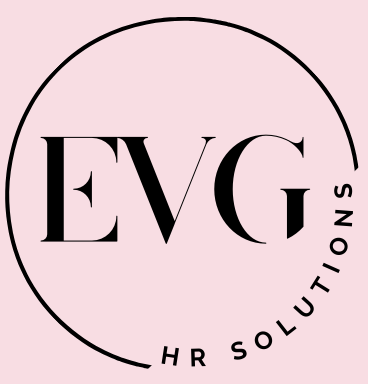You’ve built your business from scratch. You’re the CEO, the admin assistant, the social media manager, the customer service rep—and everything in between. At first, wearing all the hats felt empowering. Now? You’re juggling tasks at 11 p.m., losing track of client emails, and wondering if you’ll ever take a vacation again.
Sound familiar?
Knowing when to hire your first employee is a major milestone for any solopreneur or small business owner—and also one of the hardest decisions to make. It’s not just about adding a name to the payroll; it’s about scaling with intention.
If you’ve been asking yourself, “Is it time to hire someone?” here are 5 clear signs that the answer might be yes.
1. You’re Saying “Yes” to Everything—and Burning Out
Let’s start with the big one: burnout.
You launched your business to create freedom and do what you love, right? But if you’re constantly working late, skipping meals, and never logging off, you’re heading straight into burnout territory.
When you’re stretched too thin, your decision-making, creativity, and even your customer service can suffer. That’s not just bad for you—it’s bad for your business.
Hiring Tip:
Start by offloading tasks that drain you the most. It doesn’t have to be a full-time role. A part-time assistant or contractor can buy back your time and energy.
2. You’re Turning Down Work or Missing Opportunities
Let’s say your inbox is full of leads, but you don’t have the time or capacity to take on new clients. You’re not growing—you’re just maintaining.
This is a clear red flag.
If you’re frequently saying “no” to projects you’d love to take (or worse, forgetting to respond altogether), it’s time to expand your team. Your first hire could be the difference between plateauing and scaling.
Hiring Tip:
Think revenue-first. If an extra set of hands means you can take on more clients or deliver faster, don’t consider hiring as an expense—consider it as an investment.
3. You’re Spending Hours on Admin Tasks Instead of Growing Your Business
Here’s a gut-check exercise:
Track your time for one week. Be honest. How many hours are you spending on tasks like scheduling, invoicing, replying to general emails, or updating spreadsheets?
If your daily calendar is filled with distracting tasks that someone else could do, you’re stuck in the weeds.
As the business owner, your time is worth more. You should be focusing on growth, strategy, and client relationships—not manually inputting data or managing your calendar.
Hiring Tip:
Delegate anything that costs less than your hourly rate. If you charge $100/hr, stop spending time on $20/hr tasks. A virtual assistant can work wonders here.
4. Customer Experience Is Starting to Slip
Maybe you’re missing follow-up emails. Or taking a little longer to deliver projects. Or forgetting small client details that used to be your superpower.
When you’re maxed out, your customer experience takes a hit—even if your intentions are good.
And in today’s world, experience is everything. One delayed response or small mistake can cost you a referral or repeat client.
Hiring Tip:
Think about roles that directly support your client experience: a project coordinator, customer service assistant, or junior team member who keeps communication flowing.
5. You Have a Repeatable Process Someone Else Can Do
One of the best indicators that you’re ready to hire? You’ve built a system.
Whether it’s onboarding a client, writing proposals, or managing social media, if there’s a clear, repeatable process—you’re ready to teach someone else to do it.
Your first hire doesn’t need to be a strategist or creative lead. Start with roles that support your existing workflow.
Hiring Tip:
Before hiring, document your process. Record videos, create SOPs (standard operating procedures), and jot down checklists. The smoother the handoff, the faster your hire adds value.
So… What Should You Do Next?
Hiring doesn’t have to be overwhelming. Here are three smart steps to take after recognizing the signs:
✅ 1. Start Small (But Start Somewhere)
You don’t need to jump into a full-time hire right away. Consider:
- A part-time assistant
- A virtual contractor
- A freelance specialist (e.g., bookkeeping, content creation, admin support)
This gives you flexibility while easing the load.
✅ 2. Create a Simple Job Description
Before you post on job boards or ask for referrals, get clear on:
- What tasks you’re delegating
- How many hours per week you need
- Skills required vs. “nice to have”
- Tools potential employees will use (e.g., Gmail, Canva, Slack)
This doesn’t have to be fancy—it just needs to be clear.
✅ 3. Budget Wisely
Hiring is an investment, so think about:
- What extra revenue this role might unlock
- How many hours you can afford per week/month
- The cost of not hiring (burnout, lost opportunities, customer churn)
Hiring is rarely “perfect timing”—but with planning, it can be smart timing.
🎯 Bonus: How to Know You’re Really Ready
Still feeling unsure? Ask yourself:
- Is your workload consistent or seasonal?
- Are you turning down work you want to say yes to?
- Are you ready to be a leader, not just a doer?
If the answer is “yes” to at least two of those, you’re ready to explore your first hire.
✨ Final Thoughts
Hiring your first employee is one of the biggest steps you’ll take as a business owner. It can feel scary—but it’s also a sign of success.
You don’t have to wait until you’re drowning to get help. In fact, the best time to hire is before you reach breaking point.
Start small. Stay intentional. And remember: building a team doesn’t mean losing control—it means expanding your impact.
